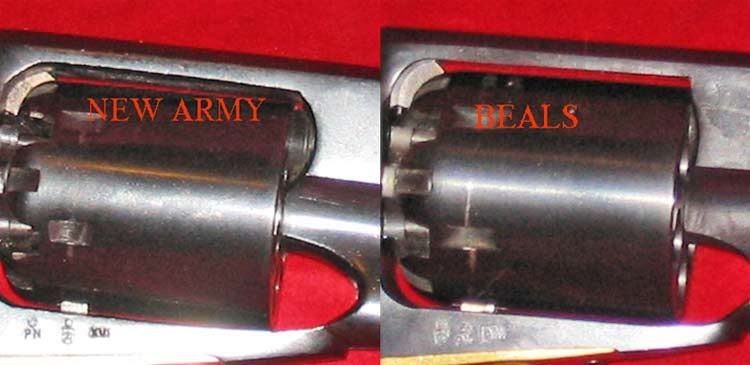I wouldn't worry about the misalignment between the machining operations from a functional or safety point of view.
I'm not so sure the gun shown is a copy of a Remington Beals Old Army revolver.
The Remington Beals Old Army had almost no relief in front of the cylinder at all. This buried almost all of the barrel threads inside the front of the receiver.
At one time several Italian companies made reproductions of the Beals and the photo below shows mine.

For those interested:
The Remington Beals was Remingtons first try at getting the Military to buy their gun. This was in 1861.
The Army bought some but was not happy.
The revolvers would lock up after firing a few shots primarily because of fouling that built up on the face of the cylinder and the receiver where the barrel is located.
Remington redesigned this area to cut away some of the receiver leaving the rear threads of the barrel standing proud.
The exposed barrel threads provided a minimal area to get fouled and also served to scrape the fouling off of the front of the cylinder.
This relief is seen on the "Remington "1861 Army Revolver" (Remingtons second attempt to please the Army) and on the Remington "New Army" (Remingtons third and final version of their Cap & Ball .44 pistol).







